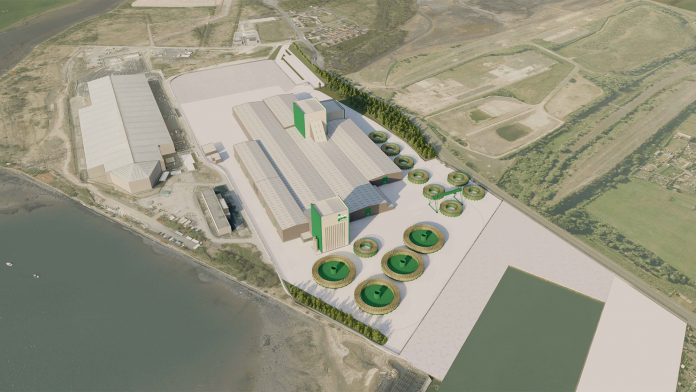A new North East cable manufacturing facility at the Blyth power station site will be delivered by Galliford Try’s Building North East and Yorkshire business
The North East cable manufacturing facility will see the creation of a new 46,000 sqm factory to help JDR expand its product portfolio.
This will in turn support the growing global offshore renewable energy market, adding high-voltage export and long-length array cables to JDR`s existing capacity and product capabilities.
The North East cable manufacturing facility will be built on the old Blyth power station site
The scheme represents a significant investment in the North East on the site of the former Blyth power station, and builds on Galliford Try’s track record for delivering high-quality manufacturing facilities within the region, for the likes of Rolls Royce and Quorn.
Bill Hocking, chief executive of Galliford Try, said: “We are delighted to be part of this fantastic project, which adds to our excellent portfolio of work in the North East, and also helps the UK towards energy security and its net zero carbon targets. We look forward to working with JDR to provide them with a first-class facility that assists them in achieving their ambitions.”
The development will help to build the UK’s energy independence
James Young, chief strategy and compliance officer at JDR, commented: “The appointment of Galliford Try and the start of construction represents a major milestone in the realisation of our new high-voltage subsea cable manufacturing facility. JDR selected Galliford Try for their technical expertise, attention to detail, strong local supply-chain and their collaborative solutions.
“We look forward to working with the team at Galliford Try to construct our facility and in doing so to bring new power cable capabilities and capacity to the UK, which in turn will help to secure our energy supply, and connect more renewable energy to power our homes and cities.”

















